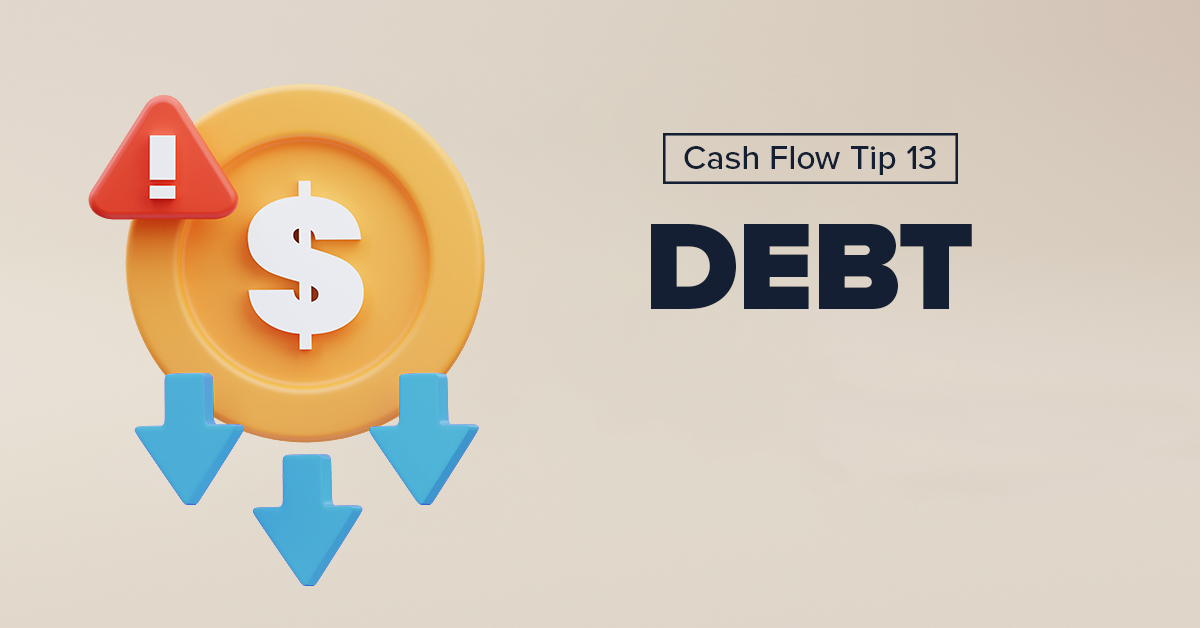Welcome to our latest blog post in the Cash Flow Series. Today, we’ll discuss the importance of managing debt in your business. From a cash flow perspective, excessive debt can be detrimental, eating into profits and limiting your ability to invest in growth opportunities or achieve personal financial goals. It’s crucial to adopt a proactive approach to debt management for long-term financial success. We’ll explore different types and categories of debt, the impact of debt on cash flow, and three actionable steps to effectively manage your debt.
Please note: this advice is general in nature and does not consider your specific circumstances. It is recommended that you seek advice from a qualified professional.
Understanding Debt
Debt can be categorised into two types:
- Short-term debt: Repayment is due within 12 months.
- Long-term debt: Repayment is due after 12 months.
Furthermore, debt can be classified into two categories:
- Secured debt: Backed by collateral, such as a mortgage or investments, which reduces the lender’s risk.
- Unsecured debt: Not backed by assets, including credit card debt, short-term loans, or trade creditors.
Debt has a significant impact on both money inflow and outflow. While it provides an influx of cash in the short term, it also creates contractual obligations for future repayments. Implementing changes with debt requires moderate ease, as it involves making informed decisions and managing financial obligations effectively.
Decision-Making with Debt: When managing debt, it’s important to establish decision-making criteria based on calculated analysis rather than relying solely on intuition.
Return on Investment (ROI): Assess the potential return on the investment that the debt will fund. A minimum rate of return should be established to mitigate the risks associated with borrowing.
Three Actionable Steps to Manage Debt
1. Review Your Assets: Conduct a thorough review of your inventory and plant and equipment list. Identify any underperforming assets that are no longer contributing to your business’s success. Consider selling these assets to generate additional cash flow and reduce debt burdens.
2. Review Existing Debt: Regularly review your existing debt and assess the interest rates associated with each loan or credit facility. Explore opportunities to restructure your debt, negotiate better terms, or consolidate multiple debts into a more manageable solution. By optimising your existing debt, you can potentially reduce interest expenses and improve cash flow.
3. Budget to Get Out of Debt: Develop a comprehensive budget that outlines your income, expenses, and debt repayment plan. Set clear goals and allocate specific amounts of time and dollars toward paying off your debt. By creating a structured debt payoff plan, you’ll have a better understanding of your financial situation and be able to allocate resources more effectively.
Effectively managing debt is essential for maintaining a healthy cash flow and securing long-term financial success. By reviewing your assets, analysing existing debt, and creating a budget to get out of debt, you can improve your debt management practices and alleviate financial burdens. Remember, making informed decisions based on calculated analysis is key to minimising risks associated with debt. Stay tuned for more insights and strategies in our Cash Flow Series to help you manage and improve cash flow in your business.
Head to our YouTube channel to view our Cash Flow Tip #13 video along with all the other tips in this series!


